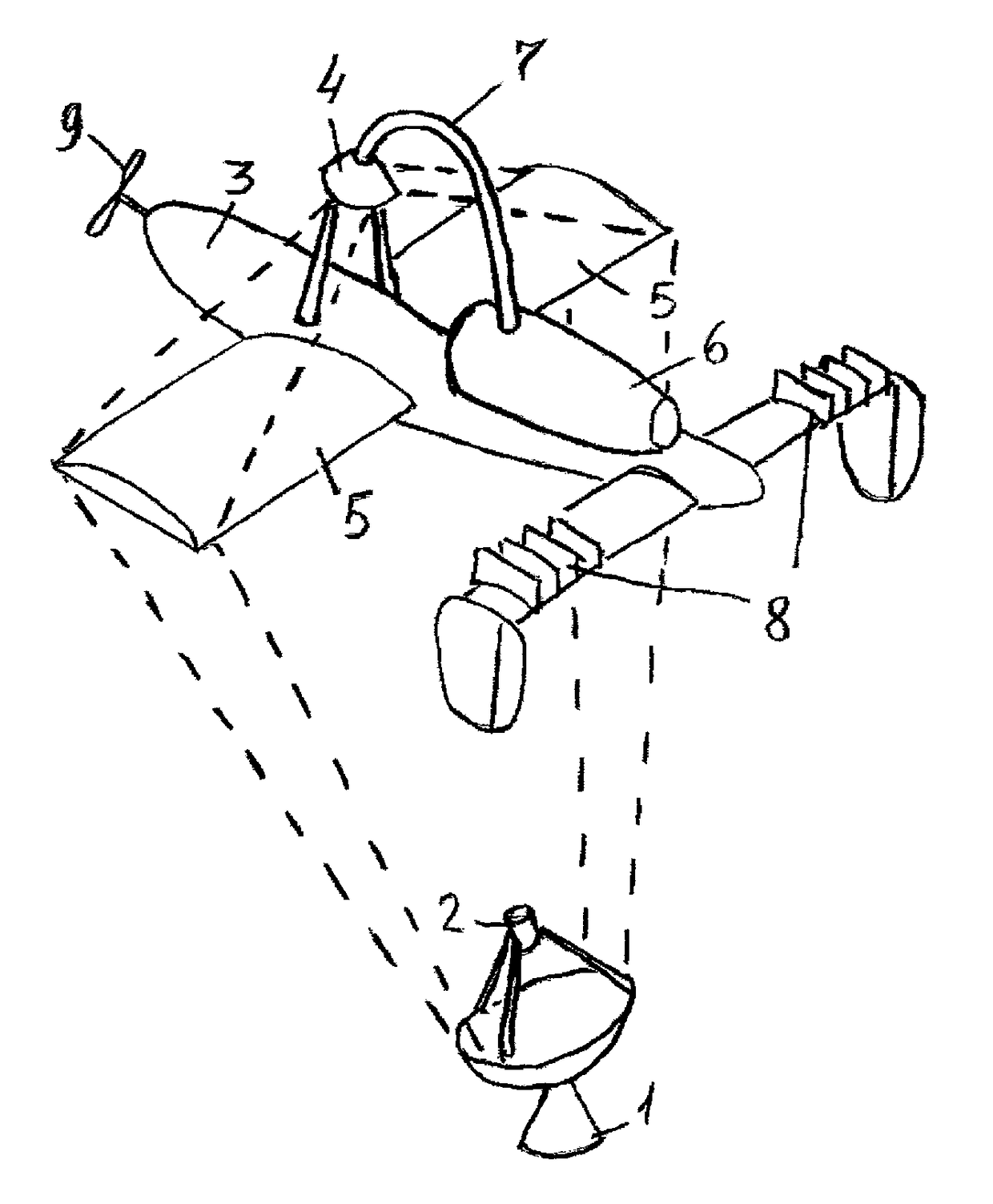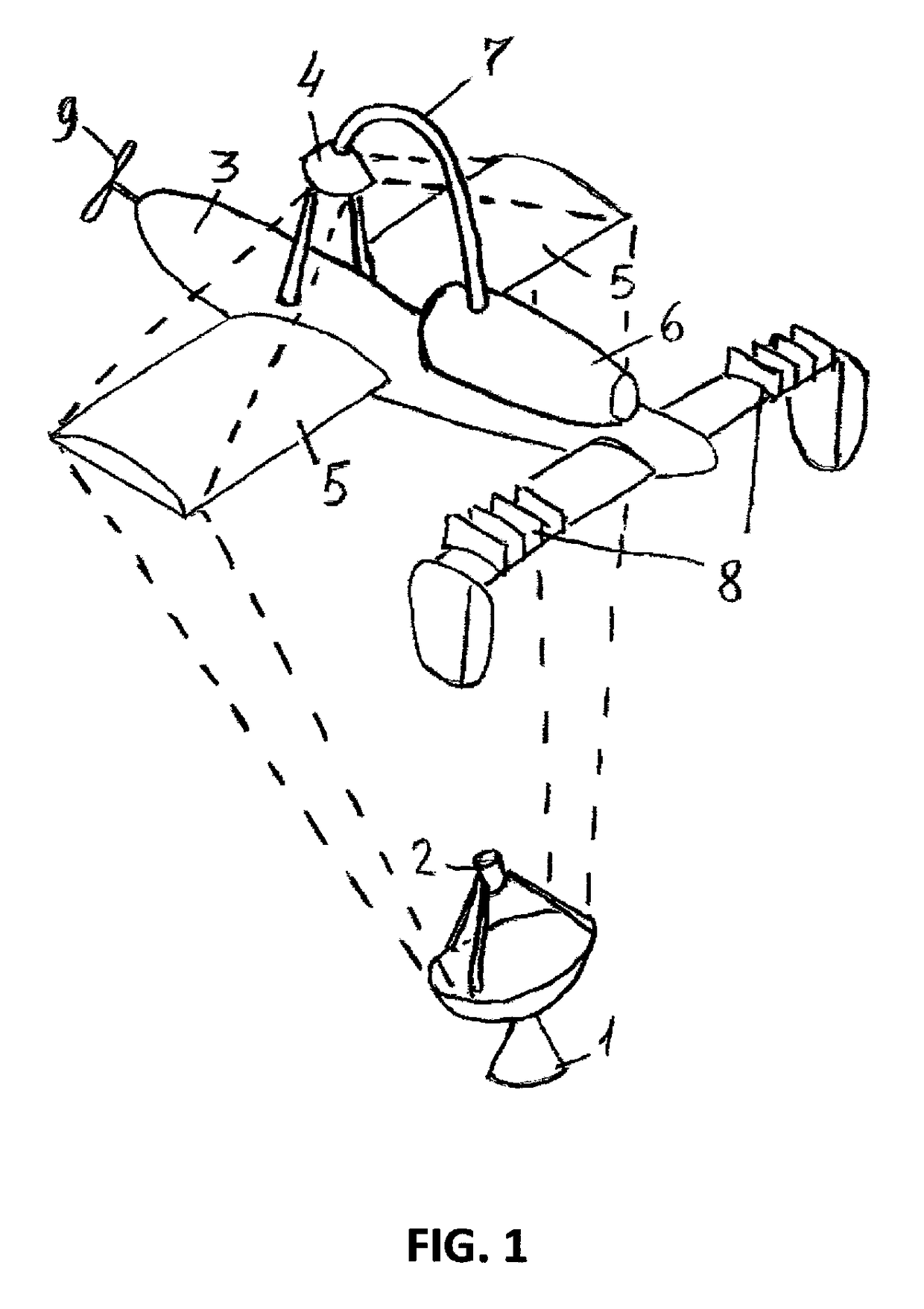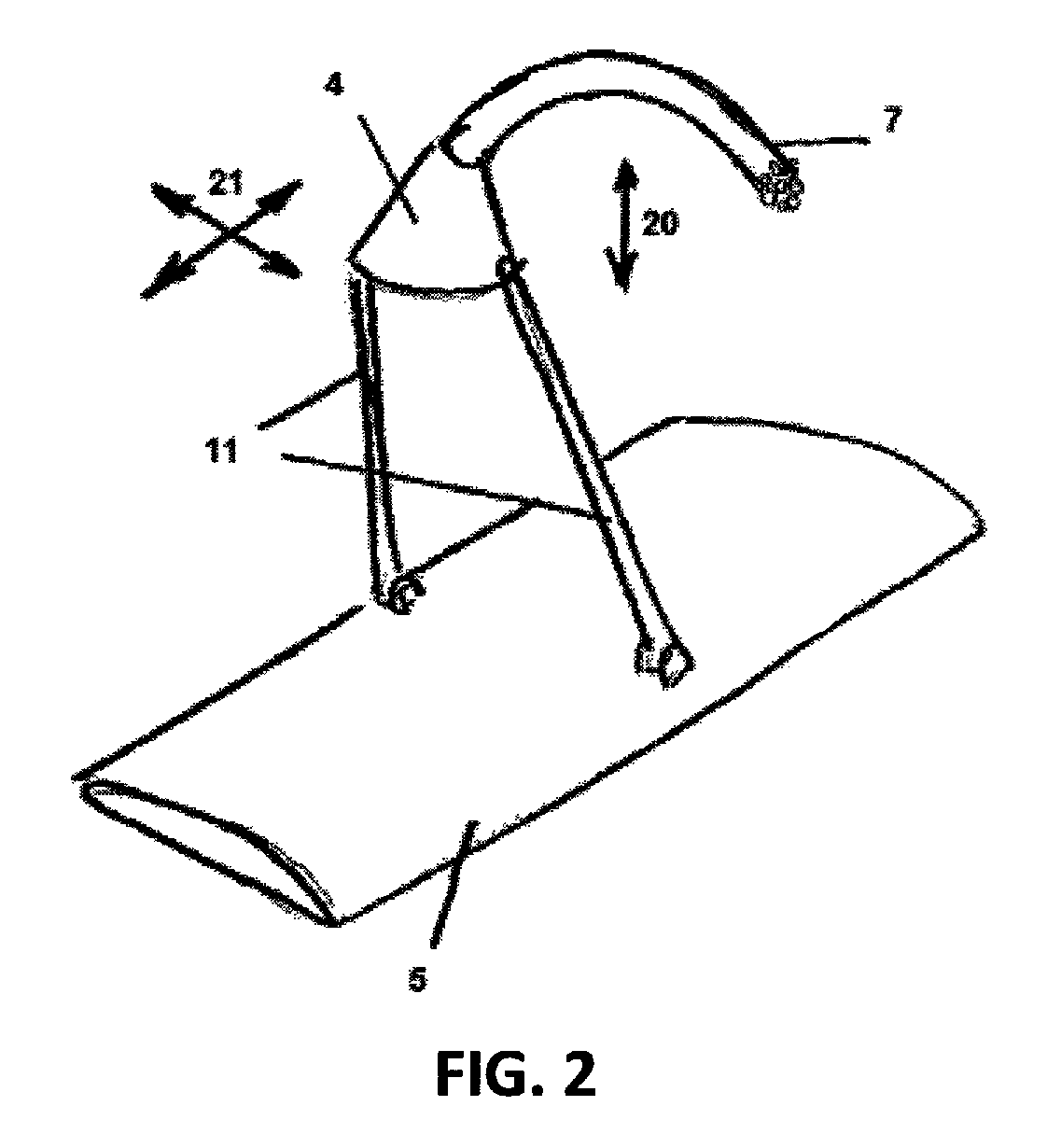Methods of laser powering unmanned aerial vehicles with heat engines
a technology of laser powering and unmanned aerial vehicles, applied in the field of aircraft powering, can solve the problems of limited power density that they can handle, inapplicability of photonic power converters, and inability to convert longer wavelengths, and achieve the effect of low air absorption and efficiency loss
- Summary
- Abstract
- Description
- Claims
- Application Information
AI Technical Summary
Benefits of technology
Problems solved by technology
Method used
Image
Examples
Embodiment Construction
[0026]The following description lists several embodiments of the present invention, which are merely exemplary of many variations and permutations of subject matter disclosed. Mention of one or more representative features of a given embodiment is likewise exemplary: an embodiment can exist with or without a given feature, and likewise, a given feature can be part of other embodiments.
[0027]With reference to FIG. 1, one embodiment of the invention includes a base station 1, which can be ground-based, or carried by a larger manned or unmanned aerial vehicle, with the laser power source 2, and tracking and control means. It also includes a fixed-wing UAV 3 with a heat engine 6 providing thrust. It also includes an impeller 9 driving an electric generator for powering auxiliary equipment of the UAV. Alternatively, if the heat engine 6 is a turbine engine, it may drive the electric generator directly. Radiators 8 are employed to dispose off of the excess heat generated by the engine and...
PUM
 Login to View More
Login to View More Abstract
Description
Claims
Application Information
 Login to View More
Login to View More - R&D
- Intellectual Property
- Life Sciences
- Materials
- Tech Scout
- Unparalleled Data Quality
- Higher Quality Content
- 60% Fewer Hallucinations
Browse by: Latest US Patents, China's latest patents, Technical Efficacy Thesaurus, Application Domain, Technology Topic, Popular Technical Reports.
© 2025 PatSnap. All rights reserved.Legal|Privacy policy|Modern Slavery Act Transparency Statement|Sitemap|About US| Contact US: help@patsnap.com



